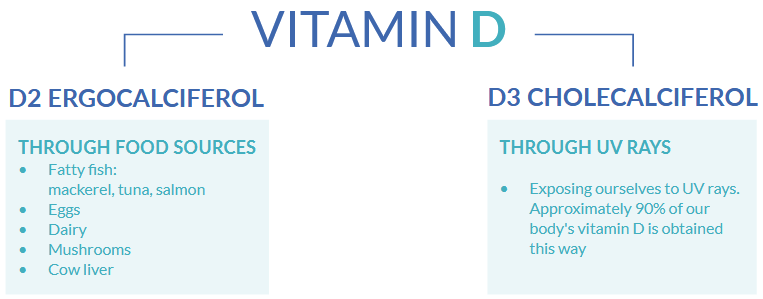Will I be able to get pregnant? Will I ever hold my baby? What can I do? What should I take? When it comes to seeking help in achieving that much-desired pregnancy, couples ask themselves many questions. One of these is which supplements they should take to make the treatment work as best as possible and increase their chances of success.
All couples know that it’s important to take enough folic acid and iodine and their benefits; but in recent years, new supplements have emerged, which we know less about: zinc, inositol, evening primrose oil, flax oil, vitamins E, and D. A good level of vitamin D is linked to higher implantation rates, better pregnancy rates, and lower risk of miscarriage. And having optimal vitamin D intake is vital to ensuring your baby’s health and proper growth.
Vitamin D is a fat-soluble vitamin that works as a metabolic regulator: it helps calcium absorption, keeps blood pressure stable, and helps insulin absorption from cells. But there is evidence linking it to problems in male and female fertility. Women with vitamin D levels below 20 ng/ml have been observed to achieve fewer pregnancies. Patients with pre-existing problems, like diabetes, obesity, polycystic ovary, or endometriosis also improve their results when they have optimal vitamin D levels. Patients with low ovarian reserve are also more responsive to treatments when they have more than 20 ng/ml of vitamin D.
In pregnancies, its deficit has been linked to an increased risk of preeclampsia, gestational diabetes, and metabolic syndrome. But this not only affects women, as men must also have sufficient levels of vitamin D for the process to go better. The lack of vitamin D in men is associated to poor semen quality in terms of morphology and motility. Moreover, treatments with vitamin D in males and blood levels above 20 ng/ml may increase the production of testosterone, the male hormone related to fertility. All this shows us the importance of controlling the levels of vitamin D before and during reproduction treatments.
There are currently a large number of women with insufficient levels of vitamin D in the blood, some of them related to liver disease, obesity, or celiac disease. There are two types of vitamin D: D2 or ergocalciferol, which we take obtain through food sources; and D3 or cholecalciferol, which our skin produces thanks to sunlight.
Ergocalciferol is obtained by consuming fatty fish, like mackerel, tuna or salmon, and also eggs, dairy, mushrooms or cow liver, among others. We produce cholecalciferol by exposing ourselves to UV rays. Approximately 90% of our body’s vitamin D is obtained this way, so exposure to the sun is important, with the necessary precautions. The recommendation is to sunbathe between 20 and 30 minutes a day.
But what’s the right amount? Values between 20 and 29 ng/ml indicate deficiencies. Values above 30ng/ml are sufficient. And between 40 and 60ng/ml are optimal levels of vitamin D. Levels above 150ng/ml cause vitamin D poisoning and risk of hypercalcemia.
Due to the benefits and assistance it brings to couples in reproductive treatments, obtaining and maintaining optimal levels of vitamin D helps them carry a pregnancy to term and have a healthy baby to bring home.





